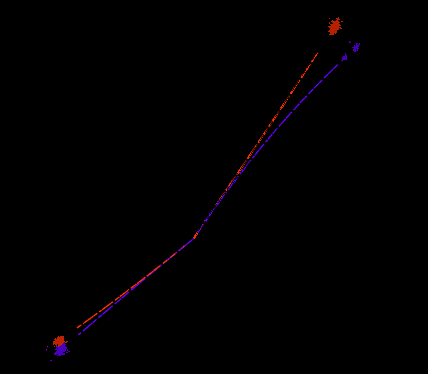vvH, H->di photon Analysis
Estimated reading time: 2 minutes- You may find the project at https://code.ihep.ac.cn/liangh/vvHgg. The website is open to register. When you can access the project, use
git clone git@code.ihep.ac.cn:liangh/vvHgg.gitto have a local copy of this project.
Introduction
In this exmaple, we will draw a plot of invariant mass of di-photon for the channel of .
Event Selection
Alought most ISR photons have escaped along the axis and not reconstructed, to make the analysis robust, we have to do more to select out the photon candidates, which comes from , from ISR photons. Thought the ISR photons are mostly along the axis and are typically of low energy, the first selection criteria are
Secondly, we need exactly two photon candidates, and any other particles are not allowed. But there are two exceptions.
-
Considering the imperfection of the reconstruction, one final state particle may reconsructed as two or more colliner particles. So the first exception is any pecies of particle in a cone which is around the candidate photon and which half angle is 7.25 degree.
-
The ISR photons are not avoidable and not harmful, if we identify them. Here we treat all photons that meet as ISRs. That is the second exception.
As I said, one final state particle may be constructed as two or more coliner particles. We need to merger these particles of the tiny “jet” to a single photon. The easy way to do this is summing up the four-momenta of all particle in the cone. However, this is not the only method. We can go back to low level information, E.g. we can analyse the clusters of hits directly. Now we use the former method:
Then the invariant mass is finally calcuated by
Result
The invairant mass is shown as bellow:

The simulation data had been fit by double gaussion function.
Pair Production
When high energy photons pass throught the matter, a photon may convert into a electron positron pair. The following is an exmaple that both photons in an event convert into electron positron pairs:
The positron and electron from pair production are highly collinear, so it’s is possible to reconstruct the photon from the electron positron pair. However, in the obove analysis, the electrons and positrons are not allowed particles. So the events with pair production will be veto in the second step of analysis. To improve the effeciency of signal, the possibility of recovering the photons from electron positron pairs can be investigated.
